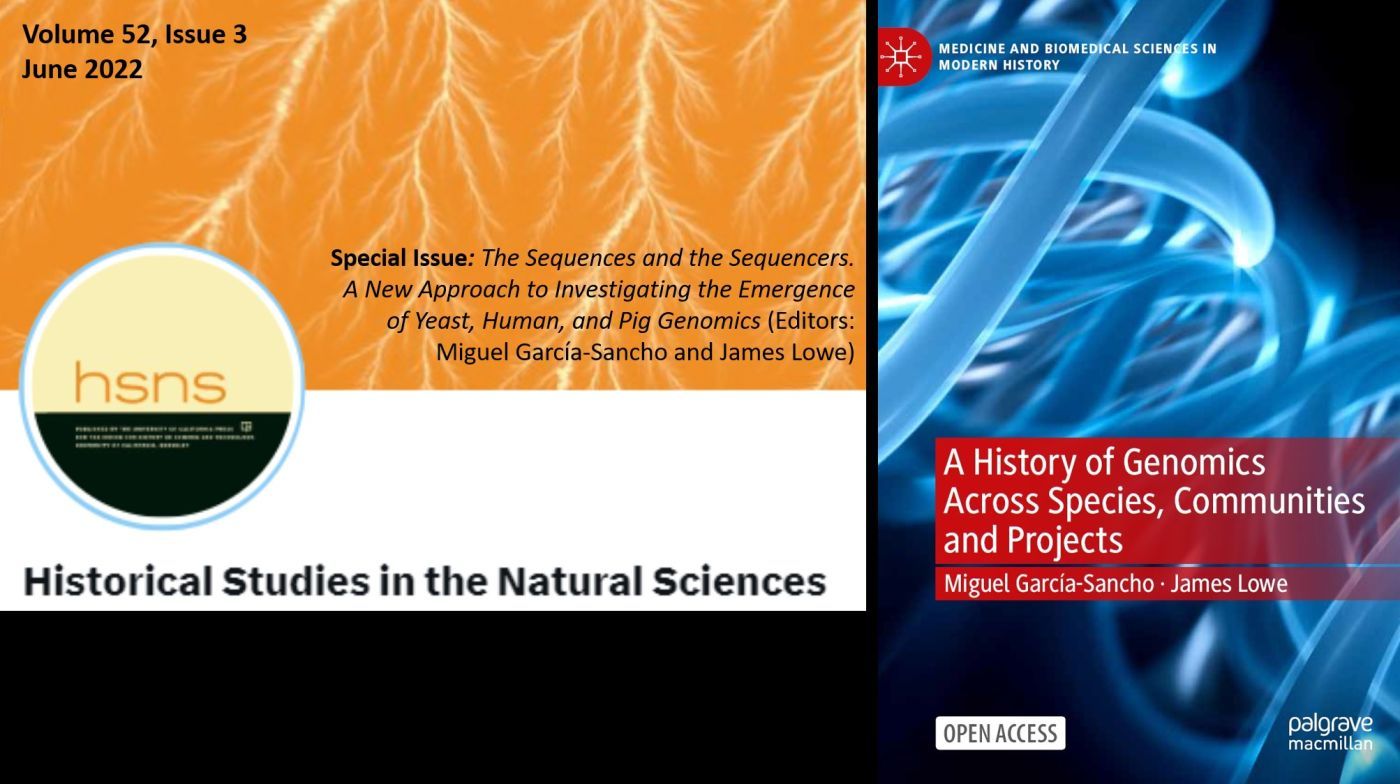TRANSGENE project concludes with two final publications
Media
Image

Blog content
March 2022 witnessed the end of the European Research Council grant that has funded the activity of TRANSGENE over the last five and a half years. The main task of the team during the last phase of the project was finalising two publications that reflect the overall results of our investigation: a special issue in the journal Historical Studies in the Natural Sciences and a research monograph in the series Medicine and Biomedical Sciences in Modern History of Palgrave Macmillan. Both publications are available open access and can thus be read without restrictions at the publishers’ sites or through the project’s website.
The special issue delivers the project’s objective of mixing quantitative and qualitative methods in the study of the history of genomics. It is formed of five peer-reviewed articles that explore human, yeast and pig genomics through a combination of oral history, archival research and the analysis of co-authorship network visualisations. Five members of the TRANSGENE team – including historians of science, scholars in science and technology studies, and experts in bibliometrics and social network analysis – were involved in their composition. The mixed methods approach enabled us to uncover actors and institutions that had previously received little attention in the history of genomics.
As a result of this, we conveyed different configurations of genomics that have been shaped by distinct ways of organising the mapping and sequencing of DNA. These diverse modes of organisation range from cataloguing the whole DNA sequence of an organism to produce a general resource, to tailoring mapping and sequencing practices towards more specific goals. We argue that the translational potential of genomics – for solving medical, agricultural or other practical problems – is, to a large extent, conditioned by the relationship and distance between the data that is produced and the objectives these data are intended to contribute towards. The collection of special issue papers is available at the website of Historical Studies in the Natural Sciences and the large dataset underlying the study can also be accessed through the institutional repository of the University of Edinburgh.
The monograph, entitled A History of Genomics across Species, Communities and Projects, fulfils the objective of producing an extensive chronological and analytical account of the development of this scientific field. It provides a detailed picture of the rise and consolidation of genomic research across three different species – yeast, human and pig – and over four decades, from the 1980s to the recent past.
We take an inclusive approach in order to capture not only the international initiatives to map and sequence the genomes of these three organisms, but also the work of smaller-scale institutions. In doing so, we expand the historiographical lens of genomics and argue that existing historical depictions are too closely associated with the activity of the large-scale sequencing centres that undertook the Human Genome Project.
By exploring the use of genomic tools by biochemists, cell biologists, and medical and agriculturally-oriented geneticists, the book portrays the history of genomics as inseparably entangled with the day-to-day practices and objectives of these communities. Offering the first extensive critical examination of the nature and historicity of reference genomes, we demonstrate how their affordances and limitations are shaped by the involvement or absence of particular communities in their production.
A History of Genomics across Species, Communities and Projects is available for purchase and open-access download at: https://link.springer.com/book/10.1007/978-3-031-06130-1
A video of a presentation of the monograph at the Egenis Centre for the Study of Life Sciences is available here: https://www.youtube.com/watch?v=RsTl7yKelV4
